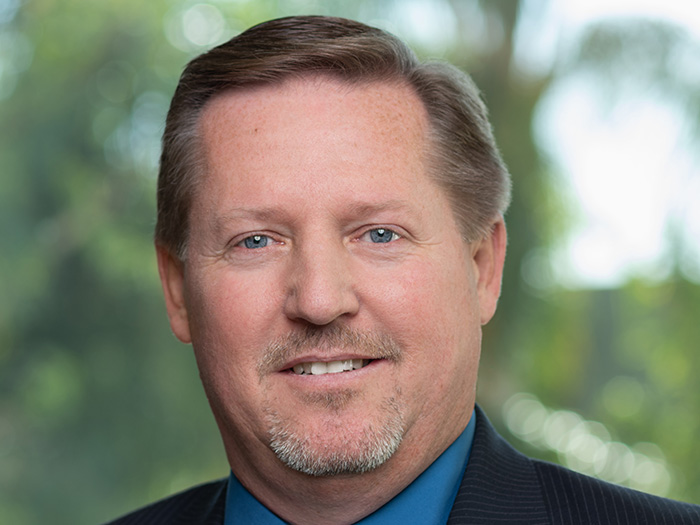Environmental Coverage Is Becoming a Bigger Player in M&A Deals. Here’s Why It’s Becoming a Necessity

Brokers and underwriters say that environmental liability tends to be the first and then the last concern in mergers and acquisitions (M&A).
“That box gets checked early in the conversation,” said Joe Quarantello, head of the national environmental liability practice at Risk Strategies. “Then the issue goes to sleep until the closing, or until a lender comes in and requires protection, because if they have to foreclose, they would become the responsible party. We also see reps & warranties carriers require environmental coverage to be put in place.
When environmental coverage is left until later in the transaction process, “that is when things can go into crisis mode,” Quarantello explained.
Over the past few years, buyer and lender awareness of pollution exposures has increased. M&A transactions are also occurring on faster timelines, compressing the amount of time environmental specialists and underwriters have to sift through historic data and negotiate insurance-based risk transfer.
“A decade ago, the underwriter would receive a submission along with supporting environmental reports and have two to three weeks to turn around a quote,” said Matthew Taylor, site-pollution segment lead in the environmental practice at The Hartford. “Today, brokers are pushing for quotes for complex deals in one or two days.”
Beyond a need for speed, threats like perfluoroalkyl and polyfluoroalkyl substances (PFAS), which are just starting to see regulations and an increase in environmental claims, are complicating M&A deals.
Not only are they complicating deals, but claims severity in connection with environmental claims is trending upward: sharply.
“This is true for both third-party environmental claims that settle or are litigated, as well as incidents that give rise to cleanup costs,” said Helen Eichmann, senior vice president in the Allied World Environmental Division.
“Litigation and settlement values are increasing and we see the impact of “social inflation” on claims. Mold continues to be a frequency issue; these claims can also reach “seven figures” so exhibit severity as well. Weather related losses are on the rise as well,” Eichmann added.
The More Information Upfront, the Better
Environmental insurance has traditionally been about covering the unknowns, but when it comes to coverage for M&As, Toby Smith, general manager of specialty casualty at Ironshore, said known risks are what underwriters are focusing on.
“Traditionally the environmental liability market has been about covering the unknown. In M&A, the coverage becomes about the known. So, what is the scope of the known exposures? Are there off-site cleanup costs? Are there toxic tort exposures? Underwriters will try to carve out exclusions to be as narrow as they can be,” he said.
On that front, it’s important to provide any technical information early in the deal process.
“The more time you give an underwriter to digest the data and technical documents, the more likely there is to be a better result,” urged Robert Potter, vice president of Synapse Services.
“It is important for us to get the technical information early,” added Smith. “That includes relevant agreements and state and federal laws.”
Though getting all the data together at the beginning is important, it is equally valuable for insureds to point them in the right direction when it comes to what to look for, especially since underwriters may be juggling multiple deals.
“We often get a data dump, but with the M&A market as busy at is has ever been, it is important for the insureds to lead the underwriter to what is most relevant,” Smith said.
“There are not enough underwriters to handle the volume of deals, especially since the ESG agenda is driving so many transactions. We estimate that at least 30% of all the deals being done lately have some ESG agenda behind them,” added Rowan Bamford, president of Liberty Global Transactions.
Knowledgeable buyers will address pre-existing pollution conditions contractually, Taylor explained, “ensuring that the party who caused the pollution assumes responsibility, or they may accept an indemnification from the buyer for the contamination. In other cases, the seller may agree to remediate pollution conditions prior to closing.”
Waves of Environmental Liability
In the past, there have been different waves of environmental liabilities that have influenced M&A transactions, according to Mary Ann Susavidge, chief underwriting officer of the environmental business unit at AXA XL.
“In the 2000s, mold, which has been around for billions of years, became an insurance issue. Suddenly it was a very big deal to know what was behind the wallpaper,” she said.
The next waves were vapor intrusion and urban fill. “We have all known about groundwater migration,” said Susavidge, “but suddenly vapor intrusion from the ground into buildings percolated into policies. Urban fill has been going on as long as there have been cities. But as greenfields became harder to find, redevelopment of areas backfilled with debris became an insurance issue as well.”
The wave currently emerging is likely to be related to PFAS, Susavidge said. Nicknamed “forever chemicals,” PFAS are unable to breakdown naturally, are suspected to cause several adverse medical conditions and are found in everything from yoga pants to fire-fighting foam.
“There has been awareness of those materials for about five years or so, but it has taken a while to show up in policies,” Susavidge explained.
“Until it is taken up in regulation and legislation in earnest, it will be difficult to see how it will play out.”
Some environmental insurers are already pulling back coverage for the chemicals, which could cause discussions over PFAS risks to become a fixture in M&A deals.
“We are seeing the entire market tackle risks associated with PFAS chemicals that have been widely used for decades. Over the last year, markets started adding exclusions at the higher risk sites, including old manufacturing operations, sites with foam fire-suppression systems such as airports, bulk terminals, and municipalities,” Taylor said.
It’s also important to remember that pollution liability doesn’t necessary imply negligence on anyone’s part.
“As a consequence, almost all transactions involve potential pollution liability. It is more a matter of characterization or quantification,” said Allied World’s Eichmann.
“M & A transactions are complex,” she added.
“Parties that engage advisors who understand the full potential spectrum of “pollution concerns” can help their clients manage this complexity and avoid that last-minute scramble.”
Not a Deal Killer
Though getting in front of any environmental insurance issues is ideal, if unexpected issues arise it likely won’t be a deal killer.
“For the deals in which we have participated, no one has walked away because some nightmarish environmental scenario has come to the surface,” Bamford said.
“Some business reason is driving the transaction,” Potter explained. “The environmental coverage itself, or whatever issues it is addressing, are not the driver; they are tangential to the deal. They are just one of the balls that are in the air.”
Most insurers have seen a significant increase in submission flow for environmental coverage related to M&A activity. For AXA XL, it has been about a 30% increase just in the last year. Rates have not risen in proportion to deal flow, Susavidge noted.
“Unlike casualty lines, which have had an incredible amount of rate [fluctuation], environmental coverage is not subject to the same degree of hard and soft markets. Over the past two decades we have seen modest rate increases.” &











